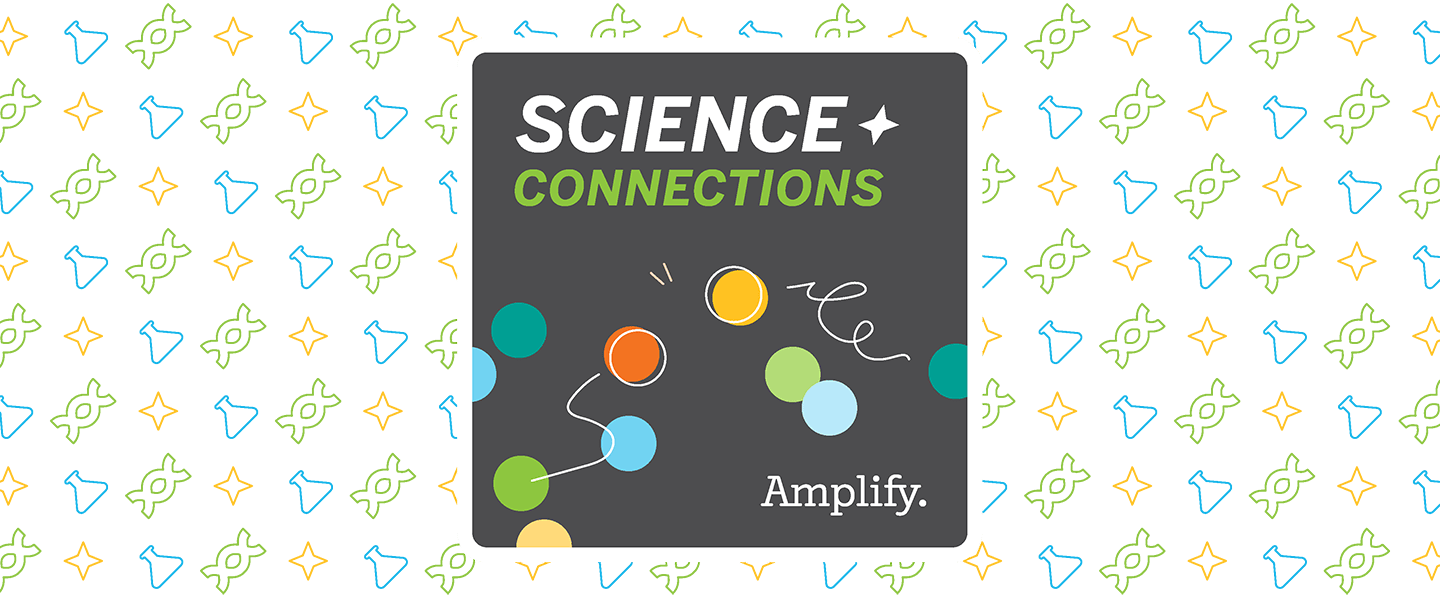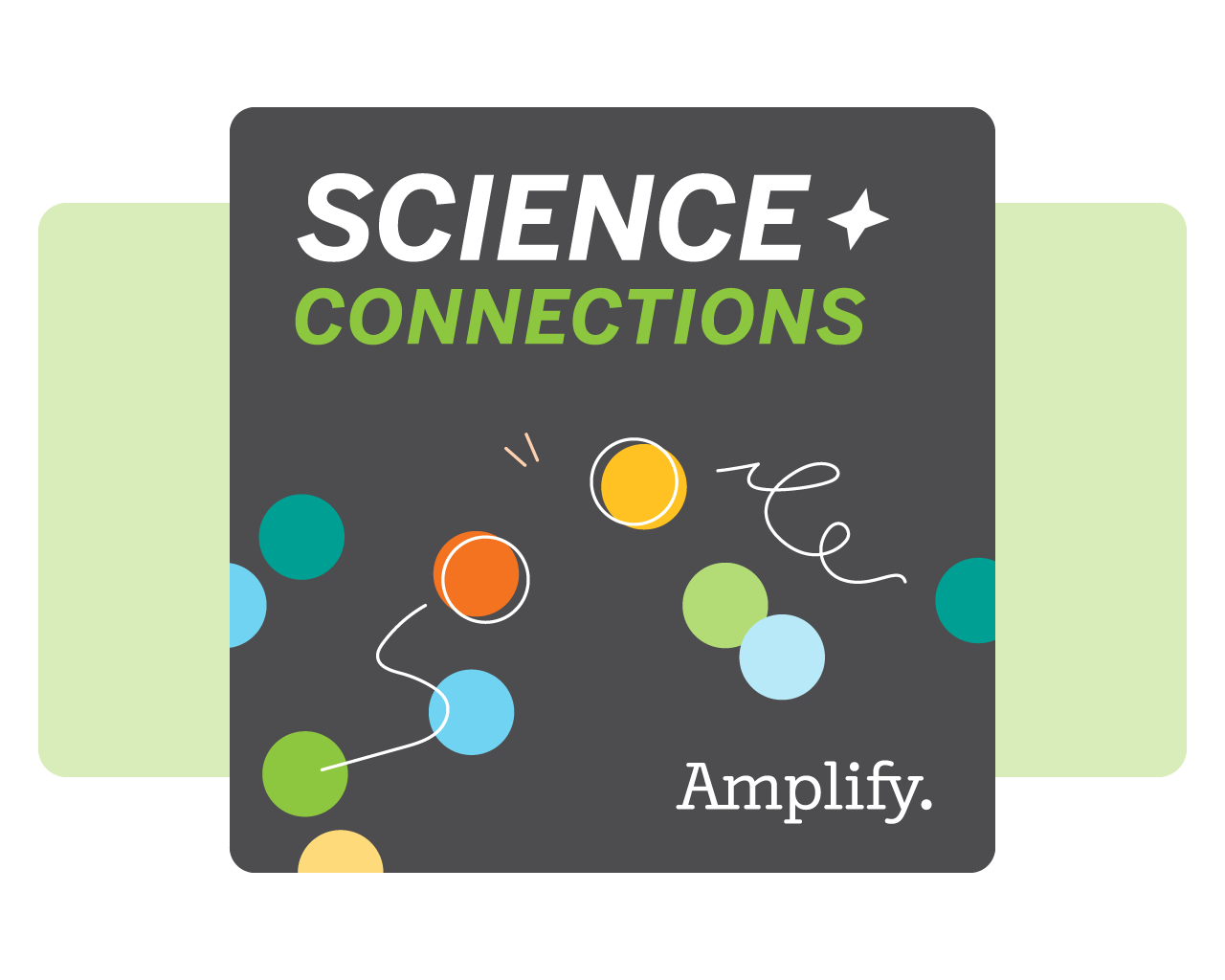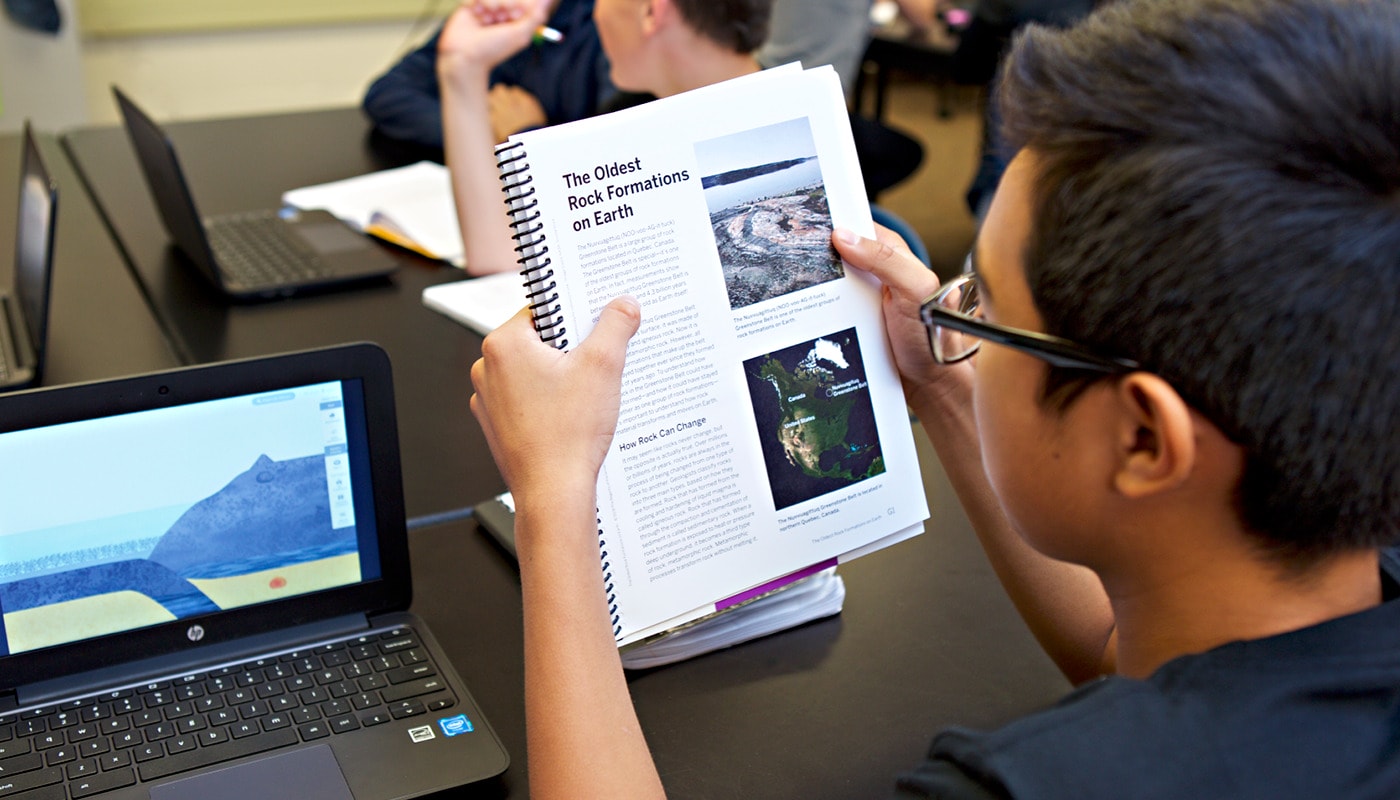
Do you ever feel like science is the underdog in your school or district? You’re not alone.
But it doesn’t have to be that way. In fact, we know that science can overdeliver. That’s especially true when educators successfully integrate it with other subjects.
You can dive into the power of integrating science and literacy with the latest season of Science Connections. Here’s a sneak peek at what we explore in the first few episodes of Season 3 of our podcast.
Rooting for the underdog
In what sense is science seen as an underdog? Just ask Eric Banilower and Courtney Plumley of Horizon Research, a consulting firm that supports educational improvement and policy development. Host Eric Cross interviews them in Season 3, Episode 1.
As you know, an underdog is generally a weaker or less favored person or entity. Banilower and Plumley find that science instruction often fits that mold.
One thing they found: elementary school teachers’ schedules allow for less instruction of science than math and ELA. They also note that when there’s a break in routine—a special assembly or early dismissal—science is often “the first thing to go,” says Plumley.
They also note that instructors (like many others) are often expected to design their own curriculum.
The conversation offers some solutions for shifting these practices, as well as supporting science instructors in general.
“You don’t ask doctors to develop new treatments and tests. Their job is to get to know their patient, assess what’s going on, and then use research-based methods to develop a plan of action. That analogy [suggests] a scalable approach for raising…the quality of science education,” Banilower says.
What is that approach? According to Banilower, “Giving teachers research-based, high-quality instructional materials that they can use to meet the needs of their ąú˛úÂ鶹ľçwould allow them to focus on getting to know their students, seeing their strengths, [finding areas where they have] room for growth, and…help[ing] those ąú˛úÂ鶹ľçprogress.”
The power of integrating science and literacy into the science classroom
Science does not need to stay in a silo. As we illuminate in Episodes 2 and 3, bringing literacy work into the science classroom can supercharge students’ work in both. (We also explore the topic in this blog post.)
“We know we need to dramatically improve literacy rates in this country, and as we’ll show in the coming episodes, science can be a key ally in that goal,” says our host, Eric Cross.
It goes the other way, too. Language development and literacy instruction can support science. “Win-win, folks,” says Cross.
In Episode 2, senior science educator Dr. Susan Gomez Zwiep described how bilingual and multilingual ąú˛úÂ鶹ľçin her school accelerated their English speaking and learning when they were excited to discuss science phenomena.
Indeed, she notes, the NGSS provides rich linguistic opportunities for students. We used to talk about language in science as all technical, but that’s changed. “Language is now developed through the science learning experiences,” says Gomez Zwiep.
Two key approaches you can use:
- Think of science lessons as a narrative. Gomez Zwiep suggests you ask yourself, “What’s the story arc of my science lesson? How are the science ideas building over time?”
- Welcome language that’s comfortable and conversational for your students.  “This expansion of language, including non-standard dialects and even home language, is really important for letting ąú˛úÂ鶹ľçbring their whole selves into the classroom,” she says.
More ways to enhance literacy in scienceÂ
Don’t worry—you don’t need to take a second job. “It’s not that you have to become a reading specialist to integrate literacy into science,” says Douglas Fisher, Ph.D., professor and chair of educational leadership at San Diego State University. “It’s how our brains work.”
It’s also how science works. “Science teachers and scientists do a lot of reading, writing, speaking, and listening and viewing. They use the five literacy processes all the time,” says Fisher, our guest on Episode 3.
Some strategies Fisher offers:
- Invite multiple aspects of literacy. Think: What role do speaking, listening, reading, writing, and viewing, play in your class? Provide opportunities for ąú˛úÂ鶹ľçto do those things each time you meet with them.
- Read challenging texts. “Science is an ideal place to get ąú˛úÂ鶹ľçreading things that are hard for them. Doses of struggle are good for our brains,” Fisher says. “Complex texts that don’t give up their meanings easily allow ąú˛úÂ鶹ľçto reread the text, mark it, talk to peers about it, and answer questions with their groups.”
- Get them writing, even in short bursts. “Writing is thinking,” he says. “While you are writing, your brain cannot do anything else.” So if your ąú˛úÂ鶹ľçunderstand a given concept, have them write about it.
And that’s just the beginning. Tune in—and stay tuned—for more strategies for encouraging literacy integration in a science classroom.
More ways to learn
- Subscribe to Science Connections to catch up on this eye-opening season.
- Download our that highlight tips and strategies for each episode and offer additional resources.


